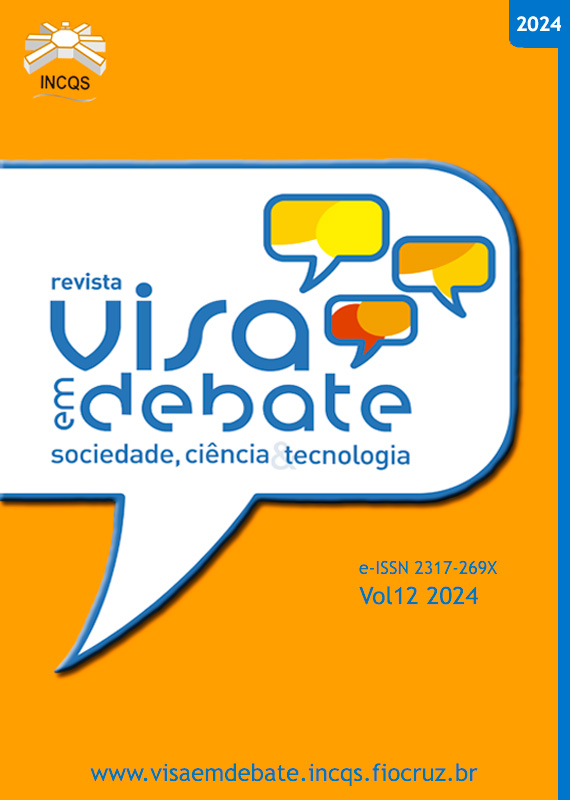Comparison of the microbiological quality of diets offered insyringes and bottles and their cost in a lactário of a national health institute
Vigil Sanit Debate, Rio de Janeiro, 2024, v.12: e02308| Published on: 04/12/2024
DOI:
https://doi.org/10.22239/2317-269X.02308Keywords:
Microbiological Quality, Breast Milk Dispensary, Enteral Diet, Pasteurized Human Milk, SyringesAbstract
Introduction: Healthcare-associated infections are considered a serious public health issue. When caring for newborns admitted to the Neonatal Intensive Care Unit, the administration of a diet contaminated with pathogenic microorganisms can help spread infections. Objective: To compare the cost and microbiological quality of the diet offered in syringes and bottles by the lactator for enteral administration to patients admitted to the Neonatal Intensive Care Unit (NICU). Methods: An exploratory experimental study “in loco” carried out between January and May 2019, consisting of the microbiological analysis of 72 samples of enteral diets and pasteurized donor human milk (PDHM) distributed in syringes and bottles. The microbiological parameters used were those of the Board of Health Collegiate Resolution No. 63/2000 and No. 171/2006. The microbiological quality of the water used in the reconstitution of the enteral diet; the swab of the manipulators’ hands and oropharynx; surfaces such as benches and equipment, utensils, and the air quality of the areas for diet preparation were also assessed. The critical control points of the diet manipulation flowcharts reviewed were defined. Results: In the enteral diet samples, coliforms at 35˚C and mesophilic aerobic microorganisms above the established standards levels were found in both modalities of the diet administration (bottle and syringe) during two days of collection (lots). In the LHOP samples, no microorganisms from the coliform group were found. When filling plastic bottles, mesophilic bacteria exceeding the established standards were detected. It was observed that the cost of distributing the diet in bottles was higher than that of using a syringe. Conclusion: It was found that the microbiological quality of the diets supplied in syringes was safer than that of the diets distributed in bottles. In addition, the diet infusion time was shorter and cost was lower with the use of the syringe.
Downloads
Downloads
Published
Issue
Section
License
Copyright (c) 2024 Health Surveillance under Debate: Society, Science & Technology

This work is licensed under a Creative Commons Attribution 4.0 International License.
COPYRIGHT ALLOWANCE The author (s) hereinafter designated as the ASSIGNOR hereby assign and transfer, free of charge, the ownership of the copyrights related to this ARTICLE to the Vigilância Sanitária em Debate: Sociedade, Ciência & Tecnologia (Health Surveillance under Debate: Society, Science & Technology) – Visa em Debate, represented by FUNDAÇÃO OSWALDO CRUZ, established at Av. Brasil, nº 4365, Manguinhos, Rio de Janeiro, RJ, Brazil, CEP 21045-900, under the conditions set out below: (a) The terms and conditions set forth in this Agreement shall apply to the following: 1. The ASSIGNOR declares that they s(he) is (are) the author (s) and owner (s) of the copyrighted property of the ARTICLE submitted. 2. The ASSIGNOR declares that the ARTICLE does not infringe the copyrights and / or other property rights of third parties, that the disclosure of images (if any) has been authorized and that they s(he) assume(s) full moral and / or property liability for its content, before third parties. 3. THE ASSIGNOR assigns and transfers all copyrights relating to the ARTICLE to the ASSIGNEE, especially the rights of editing, publication, translation into another language and reproduction by any process or technique. The ASSIGNEE becomes the exclusive owner of the rights related to the ARTICLE, and any reproduction, totally or partially, is prohibited in any other means of publicity, printed or electronic, without prior written authorization from the ASSIGNEE. 4. The assignment is free and, therefore, there will be no remuneration for the use of the ARTICLE by the ASSIGNEE.







